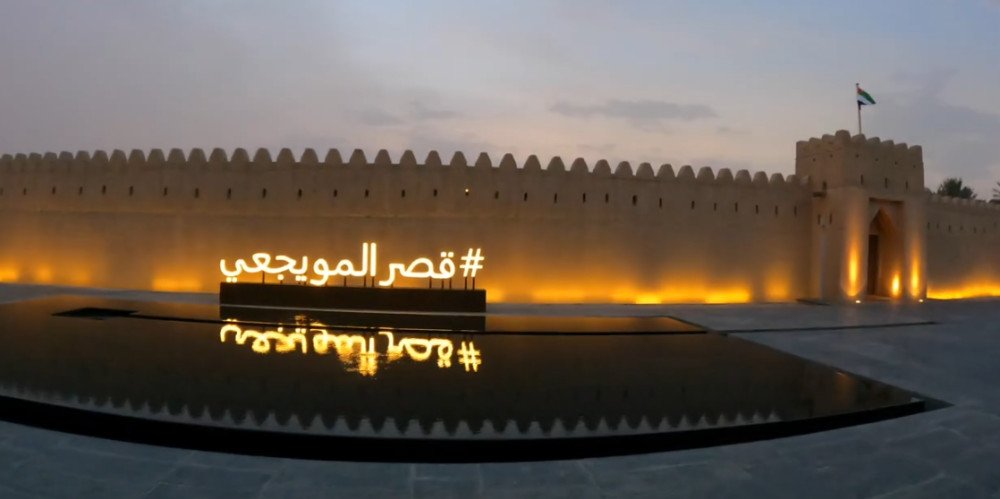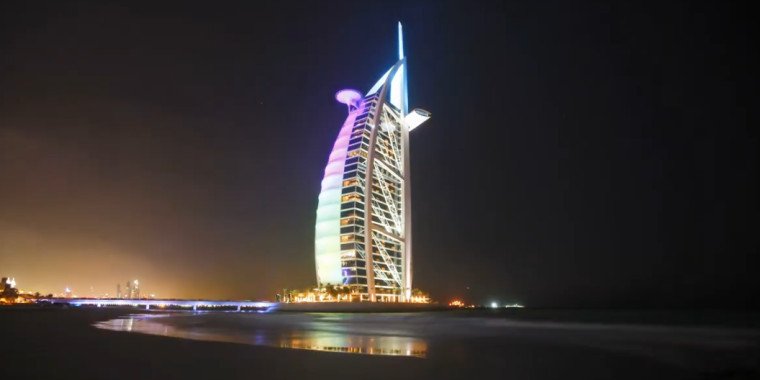
- On 02 Mar 2025
- In Travel
Qasr Al Muwaiji Abu Dhabi
Qasr Al Muwaiji stands as a testament to the rich heritage
and history of the United Arab Emirates. Qasr Al Muwaiji is located at the western
approach to Al Ain city. This fort has played a pivotal role in the nation`s
narrative for over a century. Qasr Al Muwaiji is renowned as the birthplace of
His Highness Sheikh Khalifa bin Zayed Al Nahyan the late President of the UAE
and Ruler of Abu Dhabi beyond its architectural grandeur. Now it serves as a
museum and cultural center which offers visitors a deep dive into the legacy of
the Al Nahyan family and the broader history of the region.
Historical
Background
Qasr Al Muwaiji was constructed in the early 20th century
during the reign of Sheikh Zayed bin Khalifa the First (r. 1855-1909). Qasr Al
Muwaiji was initially established by his son Sheikh Khalifa bin Zayed bin
Khalifa Al Nahyan. The strategic location of fort in Al Ain made it a focal
point for governance and community gatherings. Sheikh Zayed bin Sultan Al
Nahyan who would later become the Founding Father of the UAE was appointed as
the Representative of Ruler in the Eastern Region and took residence in the
fort in 1946. It was here in 1948 that his eldest son Sheikh Khalifa bin Zayed
Al Nahyan was born and spent his formative years imbibing lessons in leadership
and governance.
Architectural
Significance
Qasr Al Muwaiji exemplifies early 20th century
mudbrick architecture characterized by its square enclosure, prominent corner
towers and a grand entrance that underscores its historical importance. The
design of fort reflects traditional Emirati architectural principles, emphasizing
functionality, defense and communal spaces. The fort has undergone restoration
to preserve its structural integrity. Efforts have been made to maintain its
original architectural essence which allows visitors to experience its historical
ambiance authentically.
Restoration
and UNESCO Recognition
Significant restoration initiatives commenced in the 1970s
to preserve Qasr Al Muwaiji`s historical and architectural integrity. These
efforts culminated in the fort being inscribed as a UNESCO World Heritage Site
in 2011 which is a testament to its cultural and historical significance. The
restoration not only stabilized the structure but also transformed it into a
museum and cultural center to ensure that its legacy is accessible to future
generations.
Museum and
Exhibitions at Qasr Al Muwaiji
Qasr Al Muwaiji has been meticulously restored and
transformed into a museum and cultural center that offers visitors an immersive
experience into the rich heritage of UAE. The exhibitions of museum are
thoughtfully curated to highlight the historical significance of fort. Its architectural
evolution and the profound legacy of the Al Nahyan family particularly focusing
on the life and achievements of the late President His Highness Sheikh Khalifa
bin Zayed Al Nahyan.
·
Exhibition
Hall and Design: At the heart of Qasr Al Muwaiji lies a modern exhibition
hall ingeniously designed to blend contemporary architecture with the
traditional aesthetics of fort. This glass walled pavilion is situated within
the courtyard which provides a seamless visual connection between the past and
present. The transparent walls allow visitors to appreciate the restored
fortifications while engaging with the exhibits inside. The interior space is
climate controlled to ensure a comfortable environment that protects the artifacts
and enhances the visitor experience. The design emphasizes minimalism to ensure
that the new structures complement rather than overshadow the historical
architecture.
·
Chronological
Journey of the Al Nahyan Family: The museum offers a comprehensive narrative
of the Al Nahyan family`s history intricately linked with Qasr Al Muwaiji.
Visitors can trace the lineage and leadership transitions by gaining insights
into the pivotal role of family in shaping the region. The exhibition delves
into the lives of various family members by highlighting their contributions to
the development of nation and their personal stories that resonate within the walls
of fort. This chronological journey not only educates but also fosters a deep
appreciation for the enduring legacy of Al Nahyan family.
·
Focus on
Sheikh Khalifa bin Zayed Al Nahyan: A significant portion of the exhibition
is dedicated to the life and accomplishments of the late President His Highness
Sheikh Khalifa bin Zayed Al Nahyan who was born at Qasr Al Muwaiji. Visitors
can explore early life of His Highness Sheikh Khalifa bin Zayed Al Nahyan his
ascent to leadership and his visionary contributions to the growth of UAE
through a collection of personal artifacts, photographs and multimedia
presentations. Interactive displays provide an intimate glimpse into his
personal experiences, leadership philosophy and the milestones achieved under
his guidance.
·
Interactive
Displays and Multimedia Installations: The museum incorporates state of the
art interactive displays and multimedia installations to enhance engagement.
One of the standout features is a six paneled interactive table that allows visitors
to delve into the history of fort, the surrounding landscape and the factors
that led to Al Ain`s inclusion as a UNESCO World Heritage site. These
interactive elements cater to diverse audiences which makes it a learning
experience both informative and entertaining. The use of technology bridges the
gap between traditional exhibits and modern interpretive techniques by offering
a dynamic exploration of this heritage site.
·
Cultural
Events and Workshops: Qasr Al Muwaiji serves as a vibrant cultural hub by
hosting a variety of events and workshops that celebrate Emirati heritage
beyond static exhibitions. These activities range from traditional craft
workshops like the `Bisht` workshop exploring the history of the traditional
garment worn by UAE rulers to poetry evenings that celebrate the literary
traditions of UAE. Such events provide hands on experiences by allowing
visitors to immerse themselves in the cultural practices that have shaped the identity
of UAE. The dynamic programming ensures that the museum remains a lively center
for cultural exchange and learning.
·
Al
Muwaiji Oasis Integration: Adjacent to the fort is the Al Muwaiji Oasis
which is home to over 21,000 date palms and sustained by the traditional falaj
irrigation system. The museum experience extends into this lush landscape by
offering insights into the agricultural practices that have supported life in
the region for centuries. Visitors can learn about the significance of the
oasis, the ingenious water management systems and their impact on the
sustenance and growth of community. This integration underscores the symbiotic
relationship between the fort and its natural surroundings by highlighting the
importance of environmental stewardship in Emirati culture.
·
Visitor
Information: Qasr Al Muwaiji welcomes visitors to explore its historical
and cultural offerings. The site is open daily from 9:00 AM to 7:00 PM with
free entry for all guests. Guided tours are available and provide in depth
insights into the history of fort, architecture and significance. A 360 degree
virtual tour is accessible through the official website which offers a
comprehensive digital exploration of the site for those unable to visit in
person.
Qasr Al Muwaiji stands as a beacon of the rich cultural
tapestry of UAE to encapsulate the journey of UAE from its historical roots to
its modern achievements. Its walls narrate stories of leadership, resilience
and community which makes it an essential destination for those seeking to
understand the heritage of Abu Dhabi and the broader United Arab Emirates. A
visit to Qasr Al Muwaiji promises a profound and enriching experience whether
you are a history enthusiast, a cultural explorer or a curious traveler.


